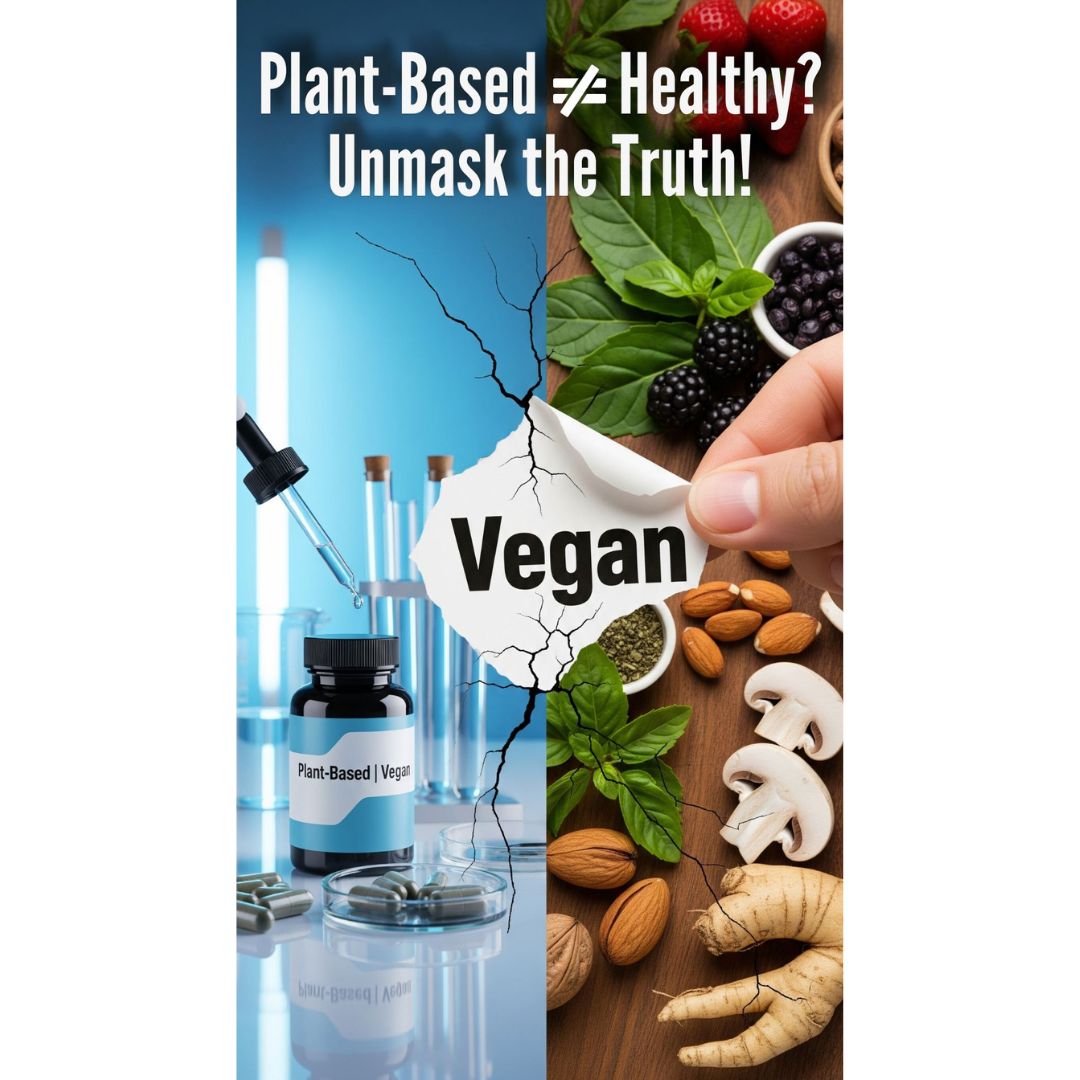When “Plant-Based” Sounds Better Than It Really Does
Let’s be honest—most of us see plant-based or vegan on a label and instantly think healthy. I used to believe that too. But once you look behind those nice, green letters, things start to look different. Many of these vegan supplements are not what we imagine when we hear “from plants.” Yes, they start from plants—but after heavy extraction and ultra-purification, the end result behaves just like the same compound made in a lab.
The Hidden Side of “Plant-Based” Supplements
Here’s the twist: even when a product begins with a real plant, it can still end up far from natural. Manufacturers often pull out one specific vitamin, then purify it until almost everything else that made that plant valuable is gone. We’re talking very high purity. Sounds impressive, right? But that purity comes with a cost. All the supportive companions—fibers, enzymes, antioxidants, and trace minerals—get stripped away. What’s left is a near-isolated chemical that technically came from a plant, yet no longer behaves like a food in your body.
What Happens After Purification
Once a vitamin is refined to that extreme, there’s practically no difference between it and a version synthesized from scratch. In some cases, the lab route is cheaper and easier to scale. The bigger loss is the full spectrum of plant compounds you no longer get—the natural mix that tends to work together in your body (often called food synergy). Reviews describe how nutrients in whole foods act in concert, rather than as lone players.
Whole-Food vs. “Plant-Based”: A Crucial Difference
Now, don’t confuse plant-based with whole-plant or real whole-food options. Whole-food choices keep more of the plant’s original structure and companions—the parts that often work in synergy for better use in the body. Think of it like a band: one soloist can play the melody, but the full group creates the sound that moves you. That “group effect” is exactly what food-synergy research talks about.
If you want a concrete example of a whole-food supplement, here’s our whole-food vitamin D
made from organic whole mushrooms and a vegan capsule—nothing extra.
And here’s another whole-food supplement option, our acerola-cherry vitamin C: whole-food supplement.
What to Watch for on the Label
Forget the shiny front. Always flip the bottle and read the Supplement Facts.
Source line: If you see the name of a real food (e.g., “from acerola cherry” or “from whole mushrooms”), that points toward a whole-food supplement. If you see a chemical name next to the vitamin (e.g., “ascorbic acid,” “ergocalciferol isolate”), it’s most likely synthetic or highly purified and isolated, not whole-food.
Other ingredients: Check the other-ingredients list and avoid additives and fillers you don’t want. Short lists are your friend.
Why whole matters: Whole foods bring a concert of co-nutrients—the food-matrix effect—so the real-world impact can differ from a lone molecule. Peer-reviewed work explains how the matrix shapes digestion, absorption, and outcomes.

